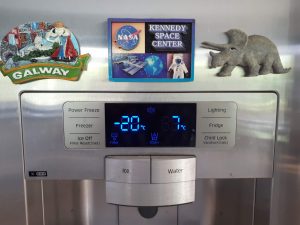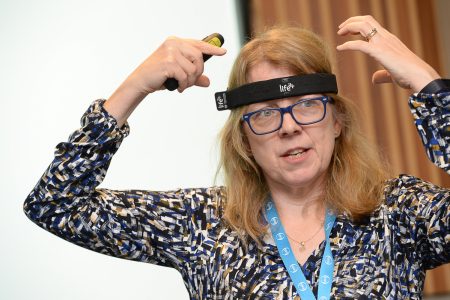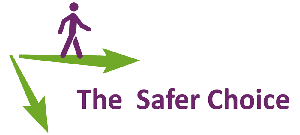The Safety Net
Bridget takes a look at look how the Internet of Things can support workplace health and safety
First published in Health and Safety at Work Magazine, January 2017. Images added 2021. It is admittedly out of date, but I’ve included it to illustrate that I’ve been writing about these topics for some time. If you’d like to sponsor me to produce an updated version, please get in touch!
The rise of the Things
There is a lot of buzz around the Internet of Things (IoT). Technology conglomerate Cisco has predicted that 50 billion items will connect to the internet by 2020, while Morgan Stanley raised the stakes with its estimate of 75 billion. The Institute of Electrical and Electronics Engineers trumped this with its suggestion that there will be one trillion devices connected to the internet by 2022. As an indication of how the “things” will have taken over from computer users, technology research specialists at Gartner have predicted that by 2020, 30% of web browsing sessions will be done without a screen – in other words, the devices will be making independent decisions (based on algorithms) without the involvement of a human.
The essential features of the IoT are that physical things, embedded with sensors, are connected to the internet so that they can share information in an intelligent way that permits the automation of tasks. Legacy sensors can be connected in new ways and sensors can be added to things where before there might not have seemed a reason for having them. However enormous the precise number of IoT connected devices will be, the falling cost of sensors and cheaper radio-frequency identification (RFID) tags, which enable the identification of unique devices, presents an opportunity to collect more data and to make better use of it.
As health and safety professionals, we might be interested, but unsure how this applies to us. The examples of IoT devices that commonly hit the press seem trivial or hopelessly niche: fridges that order milk; cows with sensors that link their grass consumption with their milk yield; or prams that send air quality monitoring data to a parent’s smartphone app. Our haphazard understanding of the subject means that it can be difficult for health and safety managers to get an overview of what the IoT might mean to them.
Stumbling block

One stumbling block in our understanding is that the term “Internet of Things” is misleading. A common misperception is that the fridge or pram talks to the IoT; in fact, devices don’t “talk” to the internet. Our printers, thermostats or pollution monitoring devices have sensors, which provide signals that need to be integrated. So while it’s about internet enabled kettles and fridges, it is also fundamentally about writing rules that take input from the “things” and translate them into something the database in the cloud can understand. Then a second set of rules determines the “output”, by looking at all this information and triggering a real-world action.
Again, popular examples don’t help us to understand the power of the IoT. One IoT provider gave me the example of a supermarket collecting fridge temperatures using the IoT and adjusting the temperature accordingly to ensure that food remains at a safe temperature. Isn’t this what thermostats already do? Another gave the example of air quality monitoring – but a local alarm telling room occupants that oxygen levels are low or flammable gas levels are high does not need reference to the internet. Other IoT examples relate to things that building management systems (BMS) are already able to do, such as looking at signals from equipment and flagging up actions for a facilities team.
The power of IoT
Where the IoT becomes powerful is when the devices can talk to each other and take action without the need for human intervention. This can have safety benefits at two levels. First, some interventions might involve risk. Think of a lone security guard checking on a BMS alarm in a remote plant room at night, who finds that the lighting is out. With IoT rules that cause the alarm signal to be integrated with other data, the system could be shut down, emergency lighting powered up and maintenance called out.
The second safety benefit is where the IoT can be more vigilant, make use of more information, and apply more intelligent algorithms more quickly than human operators. For instance, it could adjust equipment before it breaks down, thus preventing the need for a maintenance engineer to enter a confined space or remove guarding.
According to Andy Rhodes, Dell’s vice president and general manager of IoT, it’s all about “connecting what matters”. As he says: “Knowing what a heavy piece of equipment on a factory floor is doing every second may not matter; however, being able to predict that it’s going to fail before it actually does and causes harm to an employee really matters.” The key to IoT, therefore, is applications where sharing information from several sensors is useful to safety or health.
Existing “things” can connect to the IoT if suitable sensors are enabled. Any signals collected by your existing BMS or lighting systems could become an input to the IoT. Instead of needing someone to monitor the outputs, therefore, the rules take over some of the routine actions. If the temperature is out of scope – check the door status automatically and close or open doors. If there is a problem with an air conditioning or power system – make adjustments, or switch to another unit while the problem is diagnosed.
“The IOT can be more vigilant, make use of more information, and apply more intelligent algorithms more quickly than human operators.”
An example
Before IoT, an office manager checks the emergency lighting with a monthly flick test; the safety manager creates a workflow which sends a monthly reminder to the onsite technician; the technician receives the reminder on their tablet computer, carries out the task and signs it off on the tablet. The safety manager can see the action has been carried out on time, or if the check hasn’t been made, they can make a call to find out why.
But an IoT possibility would be to have a light sensor in the location, which can measure light levels accurately enough to detect when the emergency lighting is on. The technician still carries out the flick test, but the database record is triggered by the change in lighting levels. Someone still needs to be alerted to the problems that the rule sets cannot solve, but these can be filtered and sent directly to the appropriate person (using more rules), rather than requiring the vigilance of one person to solve or redirect the problem.
The IoT can also make use of BMS systems to help in emergency situations. Rhodes explains that Dell is working on several building automation use cases to connect smoke detectors to a smart fire suppression system. “In the event of a fire, the system will automatically turn off the air conditioning to prevent the inflow of oxygen to feed the fire. It will also open turnstiles and emergency exits to allow faster evacuation.” In New York, Dell has developed the technology at a 168 year old public building, Brooklyn Borough Hall, to monitor energy usage, overcrowding, and even if disabled access doorways have been blocked.
Application areas
Wearable technology
“Smart” devices incorporated into wristbands or hardhats, which can measure vibration exposure, noise exposure or air quality, are already familiar, as are those which can track positioning in relation to pieces of machinery. Some devices provide immediate feedback to the user, such as a buzz following an incorrect lifting posture, when you slouch at your PC, or when a pedestrian and a vehicle equipped with RFID tags get too close to each other. Crossrail, for instance, has widely adopted this technology.
When you connect the power of cloud computing to the IoT, it becomes more powerful. Some devices are part way there. Andy Mee, technical director at HAVi, a specialist in hand-arm vibration services and products, explains how its HAVi watch works. “It will monitor how much vibration a user receives and send them tailored messages such as ‘yesterday’s exposure was 40 points’. All data is recorded and allocated to specific users, and linked to the tools and equipment that they have used during the working day for management to scrutinise.”

Mee foresees a future where information on noise, vibration, stress, air quality and so on can be collected and interpreted in one place to improve the management of occupational health. “If we are collecting vibration data through our HAVi watch, why not collect noise data as well, reducing the need for multiple systems?”
Aggregating data across users, and combining it with location data, could help to identify hot spots where exposure most needs to be reduced. It could even feed into rostering systems to allocate people to less hazardous work if they are near their exposure limits for the week. Data could be collected and processed to see whether particular working environments or other interventions are effective at improving posture, or reducing dust, noise or vibration exposures.
Pioneers are already deploying IoT safety systems. Contractor Laing O’Rourke’s smart helmets can monitor body temperature and detect impending heatstroke half an hour before the worker is aware. The system also integrates signals from the entire workforce, collecting actionable statistics. Smart vests are a similar emerging technology.
Positioning
Positioning and tracking devices have been around for a long time, but mostly these lack the rules to trigger a course of action. Generally, information on locations is fed to a database where someone can monitor alarms, or interrogate information when someone goes missing, or locate a first-aider. Positioning information is much more valuable if combined with other data, however. In a warehouse, this could include tracking all movements, manual handling loads, orders and deliveries. Stock could be re-organised dynamically to reduce distances walked and loads handled, improving efficiency as well as reducing the manual handling burden.
UAVs
Connecting unmanned aerial vehicles (also known as UAVs, or “drones”) to the internet has more potential than providing estate agents with a new way to make a property look larger. Laing O’Rourke has replaced time-consuming and hazardous visual inspections at the Liverpool Street station tunnel shafts in the Crossrail construction project with one-person operated UAV flights. High resolution images are fed from the UAV camera to a tablet computer which can be observed from a safe location. In future, a truly IoT process would have the UAVs flying autonomously, with GPS tracking linking images to location, and only those images in need of further analysis being flagged up to a human user.
Vehicles
Some vehicles have systems providing alerts when other tagged vehicles or pedestrians are nearby. Sensors in vehicles can send back information about fuel usage, speed, driving times and even traffic conditions, but current systems rely on the insight of fleet managers to make use of the information and take action. However, future systems could take full advantage of the IoT capabilities, for example by comparing data from vehicles across the fleet to improve journey planning or driver training, or to inform decisions on purchasing new vehicles. Dell is one company developing IoT fleet management solutions.
Workplace safety equipment and PPE
Many of us have printers that order their own replacement ink cartridges, and your next fridge may be able to restock itself from Amazon. So, in the workplace, what about a network of first aid boxes and eye-wash stations that can determine when a new order is needed? If each sterile dressing and eye wash has its own tag, the ordering system will know not just when to replace used items, but when out-of-date items need to be removed. Or a network of fire extinguishers could signal when they have been displaced to be used as door props, or that they weigh less than they should do and need a service visit.
Suppliers such as Arco and Globus already offer PPE vending machines. But with the IoT, as well as triggering an order when the level falls below a pre-set level, sensors in a disposable ear plug dispenser could track ear plug usage and link this with location data (how many people were in a hearing protection zone) and with hearing surveillance data. Other items of PPE can have tags built in, so that a mask can send a reminder when a filter needs replacing, or gloves an alert when they develop a hole.
Hearables
A new term in the IoT vocabulary is hearables. Ear phones have been a common sight from the advent of the earliest Sony Walkmans, and have now evolved to the point where no physical wire is needed to connect the ear piece to the device. But why have the phone at all? Improved battery efficiency is expected to enable devices which fit in the ear to be phone, music player and hearing aid. The ear is also a good place to measure heart rate, temperature, blood pressure, ECG data and movement.
So far, applications include allowing athletes to monitor performance against body response or using monitoring data to match music choices to your mood and activities. However, there is clear health and safety potential. In the USA, a connected IoT device called eers won an OSHA innovation competion, by combining protection from hearing loss, worker monitoring and communication.
Cautions
If developments in wearables, hearables and workplace equipment lead us to a situation where the workforce is under constant digital surveillance, how will staff feel when their every movement, breath and even emotional response is tracked? Wearable technology, such as Fitbits, has been around for a while. However, if it is combined with rule sets that collect and process data related to work performance, you either have a great way of improving worker safety or a tool for management to “spy” on the workforce. Workers’ perception of the technology is an issue that will need to be tackled if the IoT is to assist in delivering safer outcomes.
Ensuring the integrity and safe storage of the data in a world where malevolent “hacking” attacks regularly make the headlines is also clearly a concern. Caution will be needed to ensure that data stays secure, systems operational and people remain safe. Reports suggest that smart meters in our homes are vulnerable to hackers, and anyone designing an IoT enabled system for a safety-critical machinery or equipment would want to make sure it was well-protected from cyber attacks.
A similar issue is ensuing that the IoT doesn’t create new hazards. This is of particular concern with automated medical devices delivering drugs, or internet-connected pacemakers that could deliver a fatal shock.
The future
Liz Bacon is a professor of computer science, deputy vice-chancellor at Abertay University, and a past-president of the British Computer Society. Professor Bacon is concerned about the security issues of wiring up our critical infrastructure to the IoT. “The possibility of billions of things connected to the internet being used in our health systems, our homes, our transport, our workplaces and even in our bodies, has a great potential to enhance our lives. There is also significant potential for people to do harm – either unintentionally, such as through poor quality software coding, or deliberately.
Considering all the risks, Bacon fears that the lack of software security professionals is “potentially the biggest shortage of human capital we have ever faced”.
Dell’s Rhodes certainly recommends that his customers think security first, but he also believes that good security enables risk-taking and innovation. “Designing IoT ecosystems must start with identifying potential vulnerabilities and developing a unified security approach to keep a step ahead of threats and maintain a predictive, proactive security posture. Be paranoid, but not paralysed,” he says.
Ahead lie further risks, and opportunties. There are now discussions about how computing can be decentralised with data processed on the “edge” of the cloud – known as “fog computing” – using local intelligence to make decisions about what needs to happen. The more locally decisions can be made the more capacity there is for more “things” – more sensors, more devices and more connections.
And rather than having people devise rules, machine learning means that rules can be rewritten by software in the cloud, or even the fog, to define what happens. In other words, as the IoT expands, so too does the artificial intelligence used to support it. But that’s another story …
